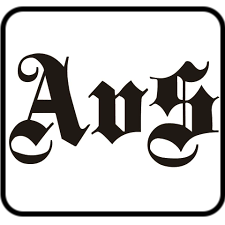Botanical painter Katharine Amies and her father, world-renowned wildflower expert Charles Flower, recently visited the Saanenland. GstaadLife caught up with them to talk magical meadows, the importance of grazing animals, and why protecting the delicate balance between people, plants, ...
Botanical painter Katharine Amies and her father, world-renowned wildflower expert Charles Flower, recently visited the Saanenland. GstaadLife caught up with them to talk magical meadows, the importance of grazing animals, and why protecting the delicate balance between people, plants, and wildlife has never mattered more.
What was it like growing up in a household so immersed in wildflowers?
Katharine: It felt completely normal - I didn’t realise how much I knew about wildflowers until I met people who’d never heard of a cowslip! I’d absorbed it all without trying. When I took a year-long botanical painting course, everything suddenly clicked. That’s when people reminded me that my grandmother had also been a botanical painter, though her delicate fungi studies were tucked away, not displayed. And with a dad who’s spent decades restoring wildflower meadows, it really does feel like a thread that runs through the family.
What brought you to the Saanenland? Katharine: We’d come here in the winter to ski as a family, but after a summer visit, I saw the place differently. The flora was so special, I knew I had to bring my dad. We came out for four days, just as the haymaking began, and the meadows were exploding with wildflowers and butterflies.
What struck you most about the Saanenland?
Charles: At first, I thought, where are the wildflowers? But as we climbed higher, it was like walking through a garden - clouds of butterflies, an astonishing range of flora. We’ve lost so much of that in England. To see this thriving system felt like a revelation. And the reason it’s intact? It’s the cows. Without them, grasses would dominate, scrub would encroach, and the wildflowers would vanish.
Grazing is the invisible management keeping it all going - a delicate, symbiotic relationship between animals, land, and people. Without it, you quickly lose diversity.
Crucially, there’s a commercial reason to keep it going. The milk from those very cows is used to make local cheese – and that cheese pays for the management. The management, in turn, sustains the biodiversity. Without that commercial incentive, the whole system is at risk.
Is the balance as fragile as it seems?
Charles: Without grazing - especially in spring - grasses quickly dominate, smothering wildflowers and preventing seeds from reaching the soil. Within a few years, much of the diversity can vanish. And yet, there’s something wonderfully hopeful about seed dormancy: some wildflower seeds can lie hidden in the soil for decades - twenty,thirty, even fifty years - then suddenlybloom when the conditions are right. I’ve seen it happen. Recovery is possible, but only if we manage the land with care. Wild doesn’t mean unmanaged. You can't just scatter seeds and walk away. It’s all connected. The Saanenland has got it right. It’s not overgrazed, and it’s not undergrazed. It’s just right.
Do you each have a favourite wildflower?
Katharine: At the moment, I’m loving field scabious and sheep’s-bit scabious - both blue and growing in the most unexpected places. They’re little pops of joy.
Charles: For me it’s viper’s bugloss - tall, brilliant blue spikes. I drove past a whole stretch of it recently, and it was breathtaking. Also, I love the violet helleborine in our wood, which lives off underground fungi until it’s ready to photosynthesise. Nature’s full of surprises.
ANNA CHARLES





